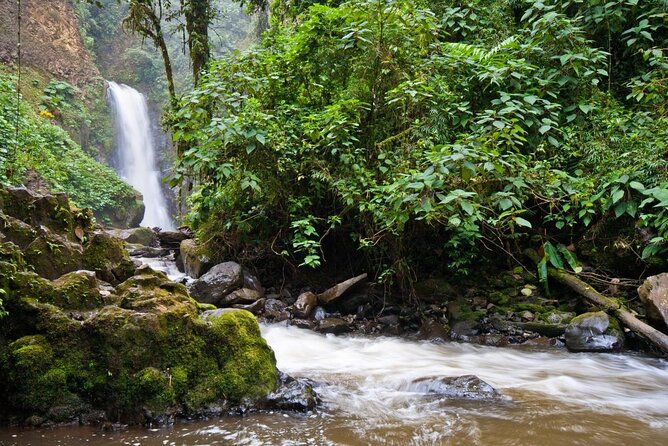Microsoft Lifecam Cinema HD Webcam for Telescope Use
The software utility provided by Microsoft with the Lifecam Cinema HD webcam is “Microsoft LifeCam”. My opinion of this release (vrs. 3.0.215.0) is that it is very minimal. With the “Select Webcam” function, I was only able to select the Microsoft Lifecam Cinema webcam and none of my other non-Microsoft webcams.
Video resolutions can be selected but no information on maximum frame rate is provided. There is no indication of the frame rate being obtained during capture nor of dropped frames. Maybe this was done on purpose by Microsoft to avoid low frame rate complaints?
Three settings of “ClearFrame” are available. “ClearFrame Technology” is advertised by Microsoft as offering ” faster and smoother image processing”. The three settings available are:
On Optimize video qualityAutomatic Optimize video quality and performance
Off Optimize performance
Based on my indoor testing, I found that using the “On” setting for ClearFrame, it appears ClearFrame is a noise reduction application in software as processor tasking is increased. It did a good job of removing noise onscreen and in the captured videos, especially in low lighting level conditions.
It may also provide a slight improvement in brightness of the video captured, but this was not dramatic.
To change camera property settings, there is a “properties button”. Selecting it opens a properties window with two tabs, ‘Video Proc Amp” and “Camera Control” as shown below.
An “Auto” check box is available for the white balance setting. The “Gamma” setting is greyed out and not selectable. For astro imaging with other webcams, I have kept the saturation level low and sharpness set to “0”, and this webcam behaved in a similar manner. The “Zoom” is a 4X software zoom, not an optical zoom, so it works after being modified for telescope use. This should be useful for focusing.
The “Focus” setting applies to the original webcam lens that is removed during the modification. There is an “Auto” checkbox that can be checked for the exposure time. I tried various different astronomy software applications to see if the webcam could be enabled to take long exposures for deep sky imaging, but none worked.
According to Microsoft, for the webcam to capture video in 1280X720 HD resolution at 30 frames per second (fps), a dual core processor is needed and that the minimum requirement for HD capture is a 1.66 GHz processor, “however, a 3 GHz processor is recommended”. My newest notebook is a few years old and is a Toshiba Satellite A105-S4134 with an Intel Core Duo T2400 (1.83 GHz) processor and 4 Gig of RAM (3 Gig recognized by Windows XP Home Media).
Before buying the webcam, I read many online reports of others that were unable to capture the HD resolution at 30 fps, but instead only half that rate: 15fps. After all attempts to squeeze the maximum performance out of my Toshiba notebook, the highest capture frame rate I was able to get using the Microsoft Lifecam software was 15 fps. The highest capture frame rate I was able to get using third-party video capture software was 10 fps.
UPDATE 11/16/09: Uninstalling the Microsoft LifeCam Driver enables 1280X720 HD video capture at 30 fps. See UPDATES at bottom of this page.
I tested the Lifecam Cinema HD webcam with other video capture software applications that I use, some mostly for astro imaging. These were:
Open Video Capture vrs. 1.1AMCAPIC Capture 2.0Nero Vision Express 3VirtualDub vrs. 1/7.2
The Properties window when using the Lifecam Cinema HD webcam with Open Video Capture, AMCAP, IC Capture and VirtualDub appears as follows:
Note that there are a few additional resolutions available when the above third party video capture softwares are used with the Lifecam Cinema HD webcam. The maximum frame rates selectable for each resolution however, are lower than the frame rates obtained when using the Microsoft Lifecam software.
An example of this is the 1280×720 HD resolution; when using the Microsoft Lifecam software a maximum frame rate of 30 fps is theoretically possible, with my actual maximum frame rate of 15 fps, whereas the maximum frame rate available with the other capture softwares is 10 fps:
With my other webcams I have been using the lossless video codec Huffyuvv2.11. I don’t know what type of compression Microsoft is using with its Microsoft Lifecam software. I have been able to reliably capture with the LifeCam HD at 1280×720 (and 1280×800) resolution at 10 fps using Open Video Capture and the other capture softwares tested.
The low light performance looks good from the testing I’ve done so far. The LifeCam HD does not have an adjustment for setting GAIN as some other webcams do and that is a useful adjustment tool for astro imaging.
Next I will test the webcam for planetary, lunar and solar imaging. I will not be able to test the webcam HD video capture at higher than 15 fps, since my notebook appears to not be powerful enough to make that happen.
The circuitry for this webcam is amazingly small. Here’s a pic with it next to a quarter coin:
On the same Toshiba notebook computer, I am now able to capture the 1280X720 HD video at 30 frames per second after uninstalling the Microsoft Lifecam Driver using Control Panel/Add or Remove Programs. Isn’t it odd that you need to uninstall Microsoft software that comes with the webcam, in order to get it to perform as advertised by Microsoft? After you uninstall the Microsoft Lifecam Driver, in video capture software the “Video Capture Pin” properties window appears as below:
For “Color Space/Compression” there will be two selections, YUY2 and MJPG. Selecting MJPG enables the faster video capture frame rates up to 30 fps, including the 1280X720 HD resolution setting. In order for the MJPG setting to work, you will need to have an MJPG codec installed on your system.
I tried a few I was able to obtain online and the one that worked best for me is “picvideo m-jpeg codec v4” by Accusoft Pegasus. A free trial can be downloaded online to make sure it will work well on your system. A low cost version can be purchased for home use. I’ll be testing other MJPG codecs. If you find another one that performs well, let me know.
The importance of the 30 fps frame rate for astro-imaging is that more 1280X720 HD frames can be captured during a certain period. An example is the two-minute window available when imaging Jupiter. At 10 fps, 1200 frames are captured. At 30 frames per second, 3600 frames are captured and this greatly increases the likelihood of higher quality frames for stacking. I found that the software K3CCDTOOLS3 and Registax 4 & 5 opens the captured AVI files and processes them well.
To date, I have tested 9 video capture programs with the LifeCam HD using the PicVideo 4 Trial MJPG encoder to allow 1280X720 resolution at 30 fps:
- IC Capture Trial – works perfect
- AMCAP – works perfect
- Open Video Capture – captures perfect but preview freezes during adjustments
- K3CCDTOOLS3 – captures perfect but preview freezes during adjustments
- VirtualDub – captures perfect but preview not available during adjustments
- wxAstroCapture – dropped frames – low capture frame rate
- Debut Video Capture – MJPG not an option
- NeoExpress3 Capture Video – MJPG not an option
- QCfocus – high definition resolution not available
UPDATE 12/01/09 – 30 fps HD Video Achieved with Lossless Codec:
I tested the webcam at 1280 X 720 resolution using the YUY2 and 30 frames per second using the Huffyuv lossless codec. It worked and there were no dropped frames!
The captured AVI files are much larger using the Huffy lossless codec but since it is a lossless compression, and storage space is not a problem for me, I will be using it for most planetary imaging as it may be the best DSLR camera for astrophotography. Here are the AVI file sizes when imaging Jupiter for two minutes:





